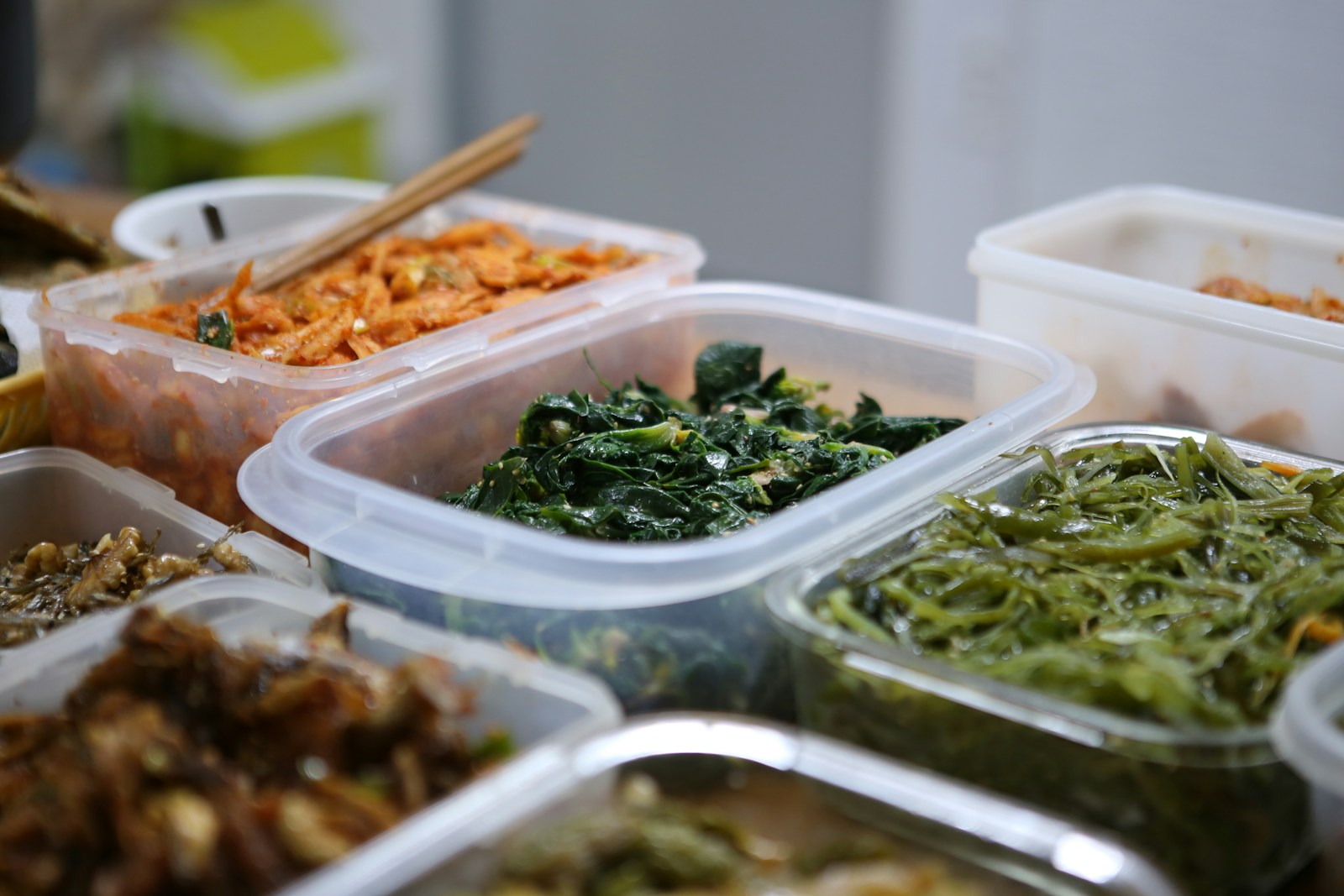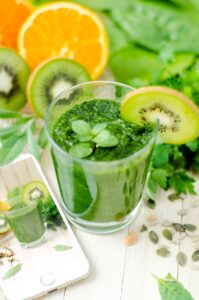TL;DR:
– Meal planning contributes to holistic wellness by saving time, money, promoting healthier eating habits, and reducing stress.
– To start meal planning, establish clear goals, create a weekly meal schedule, and develop a master grocery list.
– Key meal prep tips include batch cooking, portion control, storage techniques, and adding variety to meals.
– Utilize tools like meal planning apps, recommended cookbooks, and sourcing fresh ingredients for effective meal planning.
– For dietary restrictions, explore gluten-free, vegan, and paleo options, allergen-free meal plans, and personalize meals based on individual needs.
Introduction
Embarking on a journey towards holistic wellness often begins with the cornerstone of nourishment—Meal Planning. As a seasoned Holistic Wellness advocate, I’ve witnessed firsthand the transformative power that intentional meal planning can have on one’s overall well-being. In this post, we delve into 5 straightforward steps that will not only simplify your meal planning process but also elevate it to a tool for nurturing your body, mind, and soul. Let’s unlock the potential of mindful, intentional nourishment to fuel your holistic wellness journey.
Benefits of Meal Planning
Are you tired of scrambling to figure out what to eat every day? Did you know that meal planning can be a game-changer in your quest for a healthier lifestyle? Let’s explore the benefits of meal planning and how it can revolutionize your approach to eating better.
Saves Time and Money
– Streamlines grocery shopping by making a detailed list of ingredients needed
– Reduces food waste by planning meals that utilize items already in your pantry
– Saves time during the week by having meals ready to go, eliminating the need for last-minute cooking decisions
Promotes Healthier Eating Habits
– Allows you to focus on balanced nutrition by planning meals that include a variety of food groups
– Helps control portion sizes and reduce the temptation of unhealthy snacks
– Encourages mindful eating and better meal choices throughout the week
Reduces Stress and Decision Fatigue
– Eliminates the daily struggle of deciding what to eat for each meal
– Provides structure and predictability, easing anxiety around mealtime
– Creates a sense of control and empowerment over your dietary choices
Meal planning isn’t just about organizing your meals; it’s a holistic approach to wellness that can transform your relationship with food for the better.
How to Start Meal Planning
Are you ready to take charge of your nutrition and streamline your meal times? Meal planning is the key to achieving a balanced and stress-free eating routine. Let’s delve into the steps you can take to kickstart your meal planning journey efficiently.
Set Clear Goals and Objectives
Clarify your dietary objectives: Determine your health goals, whether it’s weight management, increasing energy levels, or improving overall well-being.
Consider time constraints: Take into account your schedule to ensure your meal plan is realistic and sustainable.
Create a Weekly Meal Schedule
Plan ahead: Designate specific days for meal prep, cooking, and grocery shopping in your weekly schedule.
Explore variety: Include a mix of protein sources, grains, vegetables, and fruits to ensure a balanced diet rich in nutrients.
Develop a Master Grocery List
Inventory your pantry: Check your current supplies to avoid duplicating items and reduce food waste.
Organize by categories: Group items based on sections in the grocery store to streamline your shopping experience.
With a structured approach to meal planning, you’ll save time, money, and the hassle of deciding what to eat each day. Stay tuned for more tips to enhance your meal prep routine.
Meal Prep Tips for Success
When it comes to meal planning, effective meal preparation is key to ensuring a smooth and successful experience. By incorporating strategic techniques, you can streamline your cooking process, enhance portion control, and infuse variety and flavor into your meals, all while saving time and reducing stress. Here are some practical tips to help you excel in your meal prep endeavors:
Batch Cooking for Efficiency
– Prepare large batches of staple foods such as grains, proteins, and veggies to use in multiple meals throughout the week.
– Invest in quality storage containers to keep your batch-cooked meals fresh and easily accessible.
Portion Control and Storage Techniques
– Use individual meal containers or portion out your meals in advance to prevent overeating and ensure balanced nutrition.
– Label your containers with dates and contents to track freshness and make meal selection effortless.
Incorporating Variety and Flavor
– Experiment with different spices, herbs, and seasonings to add depth and excitement to your dishes.
– Rotate your meal ingredients regularly to introduce new flavors and prevent mealtime monotony.
By mastering these meal prep tips, you can elevate your meal planning efforts and enjoy the benefits of wholesome, delicious, and convenient dining experiences.
Tools and Resources for Meal Planning
When it comes to meal planning, having the right tools and sources of inspiration can make all the difference. They make the process more streamlined and less daunting, especially for those who are new to this practice. ‘Meal planning’ isn’t just a keyword; it’s a commitment to health and wellness that involves careful organization and planning.
Meal Planning Apps and Websites
In an era where technology is prevalent, it’s only fair that meal planning adapts too. With a variety of meal planning apps like Mealime, Eat This Much, and websites like Skinny Taste, you can browse through multiple recipes, tailor the meals according to your preference, and get a calculated grocery list instantly. They also help track nutritional information, making your ‘meal planning’ convenient and precise.
Cookbook Recommendations
If you prefer traditional methods or seek a tangible source of inspiration, cookbooks can be a valuable resource. They don’t just provide recipes but also offer insights into food culture, ingredient substitutions, and cooking techniques. Some popular meal planning cookbooks include “The Healthy Meal Prep Cookbook” by Toby Amidor and “Cook Once, Eat All Week” by Cassy Joy Garcia.
Sourcing Fresh and Sustainable Ingredients
When ‘meal planning’, the quality of ingredients can make a crucial difference in the taste and nutritional value of the meal. So, opt for fresh, seasonal, and locally-sourced ingredients whenever possible. This practice supports local farmers and promotes a sustainable food system. There are several resources online, like Local Harvest or Farm to Table, to locate farmer’s markets and sustainable produce in your area.
For a more seamless meal planning experience, consider creating a master list of staple resources, investing in a practical collection of cookbooks, and using technology to your advantage.
Meal Planning for Dietary Restrictions
Have you ever wondered how to navigate meal planning when you have specific dietary restrictions? Whether you’re gluten-free, vegan, or following a paleo lifestyle, meal planning can be a game-changer in ensuring you meet your nutritional needs while enjoying delicious meals.
Gluten-Free, Vegan, and Paleo Options
– Gluten-Free: Focus on naturally gluten-free grains like quinoa, rice, and oats. Incorporate plenty of fruits, vegetables, and lean proteins for a balanced diet.
– Vegan: Explore plant-based protein sources such as beans, lentils, tofu, and tempeh. Embrace a variety of colorful veggies and whole grains for a nutrient-rich diet.
– Paleo: Opt for lean meats, seafood, fruits, vegetables, nuts, and seeds. Avoid processed foods and dairy to align with paleo principles.
Allergen-Free Meal Plans
When dealing with allergies, careful meal planning is essential. Identify allergens and find alternative ingredients that are safe for you. Consider consulting with a nutritionist to ensure your meals meet your dietary requirements.
Customizing Meals for Individual Needs
Personalize your meal plans based on your unique dietary needs and preferences. Experiment with different recipes, ingredients, and cooking methods to find what works best for you. Don’t hesitate to modify recipes to suit your tastes and requirements.
Transitioning to a specialized diet can be challenging, but with thoughtful meal planning, you can embrace your dietary restrictions and still enjoy delicious, satisfying meals that nourish both body and soul.
Next, let’s wrap up our discussion on holistic wellness with a comprehensive conclusion that ties together all the elements we’ve explored.
Conclusion:
In essence, meal planning emerges as a cornerstone for achieving holistic wellness. By meticulously curating balanced meals, individuals can enhance their physical health, mental well-being, and overall quality of life. The strategic incorporation of Meal Planning not only fosters healthier eating habits but also cultivates mindfulness around nutrition choices. As you embark on your meal planning journey, remember that small, consistent steps can lead to transformative results. Dive deeper into the realm of Meal Planning to unlock a world of nourishment and vitality for a harmonious mind-body connection. Start your wellness journey today!










